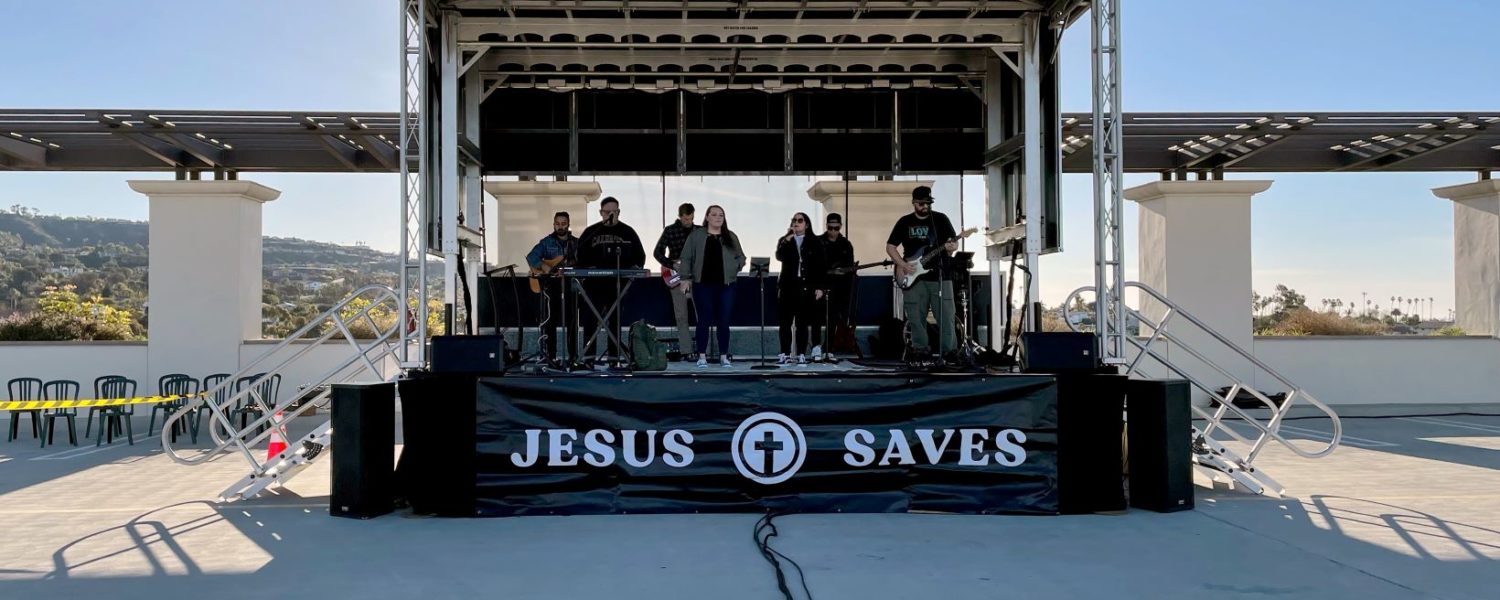By Todd Allison
The pandemic has been hard on everyone. But it has been particularly hard on businesses and organizations that require people to gather. Concerts and events, as we know them, have become a thing of the past. Churches have also struggled to meet safely.
But amongst all this uncertainty, a new trend has emerged: the drive-in church service.
Drive-in services are not a new thing. They are, however, new to our generation. After WWII, America was in love with its automobiles. We wanted to do everything we could with them. We collectively cruised the strip, went to drive-in restaurants, attended drive-in movies, and even gathered for drive-in church services.
It was a way Americans could do things as a group, but separately. It is no wonder then that drive-in activities have reemerged. It is the perfect way for us to assemble without the COVID risk of being in large groups.
During the early pandemic, the whole nation sought a way to have graduations for our students. The solution appeared almost immediately. We could keep people at safe distances by doing drive-in or drive-through graduations. Churches saw this solution and followed shortly after. Last summer, drive-in church services popped up all around the country.
As Christians, we undeniably need to meet in person. It is, after all, how churches got the name congregations. And during the pandemic, we have often congregated with the help of drive-in services. But along the way, something unexpected happened. Once we began doing drive-ins, we discovered an actual need to do them.
Churches found that people were attending drive-in services that they had never seen before. It uncovered groups of Christians that need the type of environment that a drive-in service provides. These are people we often do not think about: the immunocompromised, people with anxiety disorders, and even people who need church but are nervous about approaching a new one.
Moreover, drive-ins are just fun. It is a new way to experience God’s word. It calls attention to itself in the community. It lets everyone know that we are here, God is here, and everyone can join us.
For those who have never done one, outdoor services may seem a little daunting. But they are easy to throw together. Suppose your church has access to an outdoor amphitheater. In that case, you can skip the drive-in and just use social distancing in an outdoor environment. A church just needs to have a mic and an amplifier.
Drive-in services can also use existing outdoor facilities. There are still-operating drive-in theaters. Many of them are willing to rent or let churches use their facilities when not otherwise occupied. It is a quick and easy way to set up a drive-in service.
However, the most common way drive-in services are conducted is by setting up a stage on an open piece of land.
A stage can be simple. It just needs to be a raised surface, so people in and around their vehicles have appropriate visibility. It can be any safe portable structure, such as portable risers or a flat-bed trailer. The sound system can also be simple; it can just be a mic and some small amplifiers. And a necessary location should not be too hard to find. It can be an empty parking lot or an unused field.
All of that said, many churches have found advantages to using equipment designed for event production. Using portable production equipment allows flexibility. It lets services be as straightforward or as involved as a church wants.
Real production equipment can turn a simple drive-in gathering into an actual event. Plus, many churches have quite extensive musical performances and even video productions.
Mobile staging can accommodate all of that. Many models are designed to hang lights, PA speakers, and video walls. It can rival what churches offer indoors and be expandable if services get larger.
Additionally, mobile staging allows some environmental control. Mobile stages can often be raised or lowered to enable the audience to have better visibility or accommodate uneven terrain.
Mobile stages also have a roof and can be surrounded by fabric sidewalls to help keep out the elements or control stray lighting.
Sound systems are also flexible. They can be a couple amplifiers sitting on the corners of the stage, hanging PA speakers, or an FM transmitter system so congregants can listen on their radios.
Now, obviously, for most churches, the cost is a factor. But it is easy for a church to start small and upgrade its equipment as need dictates. There are numerous options for equipment, including stages, sound, and AV equipment designed just for churches.
Furthermore, some equipment, like mobile stages hold their value well and are easy to sell for an upgrade. And if buying equipment is not an option, mobile production equipment can be rented in most areas.
Churches interested in having drive-in services have many options. They should not let inexperience scare them away since they are easy to organize. The important thing is that the drive-in format allows churches to meet safely.
But this new trend in drive-in church also opens new possibilities. It expands the horizon of what church can be and who churches can reach. It makes the message mobile. A church service can move to new locations and declare the gospel to new ears. A drive-in service pushes what we often take for granted into the world and boldly announces itself.
Right now, drive-in services are, for many congregations, a necessity. But drive-in services could be here to stay. They are one of the many ways church is being reimagined in the 21st Century.
And with the way technology has evolved over the last couple of decades, there is almost nothing that cannot be done in a drive-in format that cannot be done in a building.
Todd Allison is president of Progressive Products, Inc. (PPI), a manufacturer of the APEX and Astra line of mobile stages for the event production industry, www.apexstages.com.
Photo courtesy of Calvary Chapel of San Juan Capistrano, California












